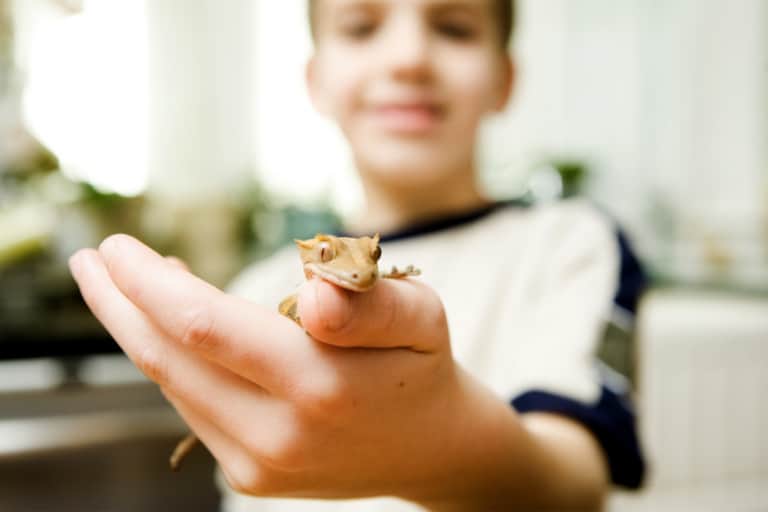The Best Chinese New Year Foods and Recipes
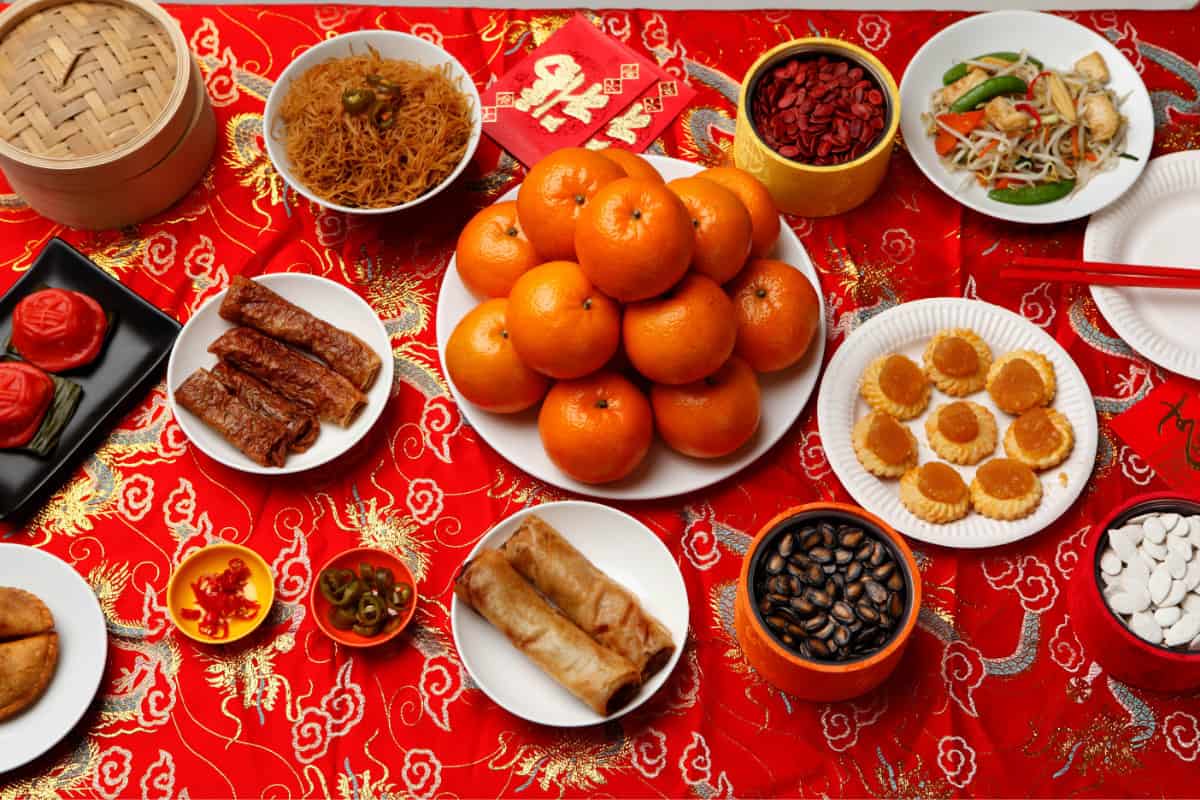
One of the most important parts of a cultural celebration is food, and Chinese New Year is no exception! Check out the rich celebrations associated with this holiday, and of course, some yummy Chinese New Year foods and traditional dishes.
Jump to RecipeWhat Is Chinese New Year?
Chinese New Year celebrates the beginning of a new year on the lunar calendar. It’s also called “Lunar New Year” or “Spring Festival,” a 15-day festival in China and Chinese communities worldwide, beginning with the new moon. This year, it culminates on Sunday, January 22, 2023.
What Are Some Chinese New Year Traditions?
A “reunion dinner,” typically celebrated by Vietnamese and Chinese families on the eve of the New Year, is one of the most cherished traditions, complete with a variety of foods.
It’s important to note that billions of diverse people worldwide celebrate the Chinese Spring Festival and Chinese culture. So each family will pick and choose their favorite foods, influenced by their regional family traditions.
Chinese New Year celebrators incorporate many symbolic elements in Lunar New Year dishes. These include how the food sounds when its name is spoken out loud, its preparation, and how it’s served. All of these can make these dishes more meaningful. Here are some other ideas:
- Double down on red! Red is considered a lucky color and symbolizes joy, happiness, and prosperity.
- Share the wealth with red packets gifted to kids and unmarried adults: known as hongbao in Mandarin and lai see in Cantonese.
- Watch the CCTV Spring Festival Gala.
- Watch traditional dancing and fireworks shows.
- Tidy up! It’s traditionally thought that if you clean out the house of bad luck and bad spirits, you’ll ring in the new year with plenty of good fortune!
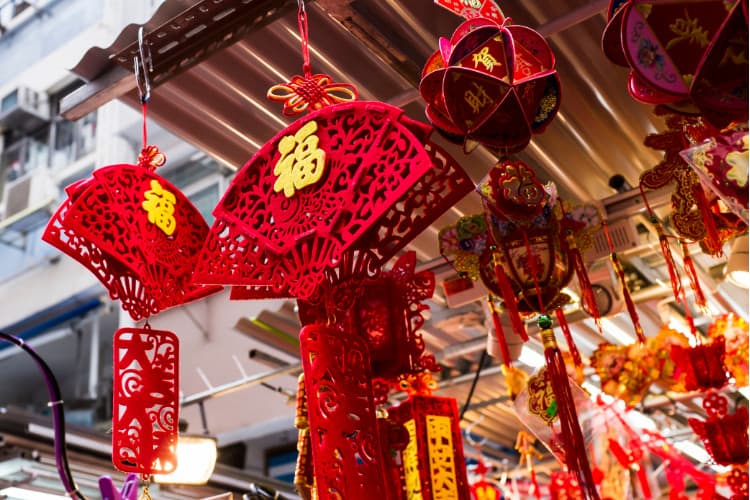
Traditional Chinese New Year Foods
Check out these lucky foods and main dishes you can prepare for your Chinese New Year:
- Sweet Glutinous Rice Cakes (Nian Gao): This is a dense and sticky dish made of glutinous rice flour. Depending on the region, it can be savory or sweet. “Nian” translates to “year,” a homophone for the word for “sticky.” Gao loosely means “higher up.” When said aloud, nian gao means “higher success in the new year.” The Southern regions typically favor this treat.

Instant Pot Nian Gao (Sweet, Glutinous Rice Cakes)
Ingredients
- 4 cups (600g) glutinous rice flour
- 2-1/2 cups water
- 2 cups dark brown sugar
- 1/4 cup white sugar
- 4 slices ginger
- 1 tbsp vanilla extract
- zest large orange
- 4-5 sheets sheets banana leaves
Instructions
Prepare the banana leaves
- Blanch the banana leaves in hot boiling water for about 5 minutes to soften it. Pat dry and set aside.
- Cut the banana leaves into 7-inch width and about 7-8 inch length. Line the leaf horizontally and then vertically like a “+” (overlapping at the bottom of the dish) and then diagonally like an “X” to make sure I cover all the side and bottom of the dish. Repeat this pattern for 2 more times. For slow cooker, skip down to slow cooker to read the instruction
Nian gao batter
- Place both sugar, ginger, and water in a saucepan and bring to a gentle simmer or until sugar is melted. Remove from the heat and let it cool down completely. Remove the ginger.
- Gradually pour the sugar mixture into the flour and stir until smooth. Then stir in the vanilla extract and orange zest. If there are lumps, strain it with a sieve and then pour into the pan lined with banana leaves.
- Pour 1 cup of water into the inner pot and set the trivet, placing the nian gao on top. Cover with aluminum foil and close the lid. Pressure release valve to seal and press pressure cooker, high pressure. I recommend using aluminum or stainless steel pan as they conduct heat better. Set the timer to 60 minutes and then wait 5 minutes to release pressure.
- The cake will still seem very soft. If you use a chopstick to poke the middle of the cake, nothing should stick to the chopstick. If there is, the cake is not cooked through yet
- Let it cool down completely and then wrap with aluminum foil. Let it sit at room temperature for at least 24 hours before unmoulding or attempting to cut. They will get slightly firmer. They can be kept at room temperature for up to 1 week if it’s not humid. They can be refrigerated for up to 6 months.
Nutrition
- Whole Fish or Chicken: Fish is especially a common New Year’s dish in southern China. Chinese speakers pronounce the word “fish” the same way as the word for leftovers. So, if you eat ‘yú,’ you’ll have food or wealth in such abundance, you’ll even have leftovers into the new year. You may also eat a whole chicken on Chinese New Year. Serving food whole symbolizes the whole family’s reunion.
- Dumplings (Jiaozi): Dumplings resemble coins used in ancient times. So, naturally, if one is so rich that they’re able to “eat money,” it follows that they will continue to have wealth and prosperity. Some people consider certain varieties, like cabbage and radish, more favorable than others. In the North, people commonly eat dumplings filled with minced pork.
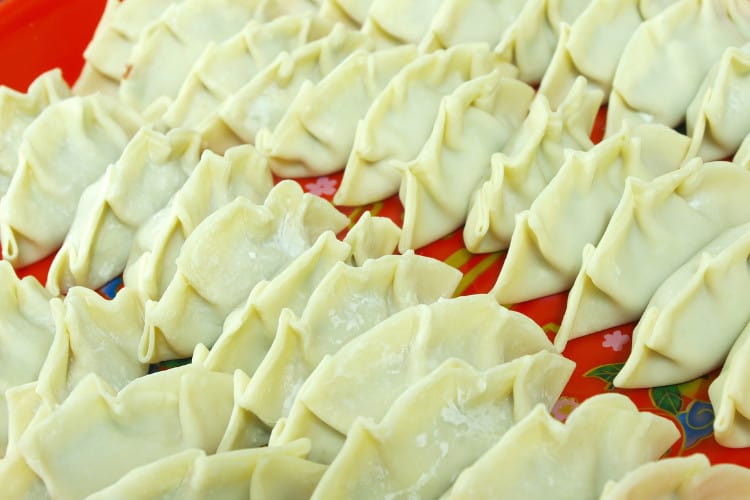
- Sweet Rice Balls (Tangyuan): These are typically served on the 15th and final day of the festival’s celebration, also called the Lantern Festival. The Chinese serve tangyuan deep-fried or in a thin broth. You can find them filled with anything sweet!
- Longevity Noodles (Changshou Mian): Traditionally one continuous noodle strand represents long life, these days, you’ll often find them served as many strands served in a broth or gravy-like sauce.
- Shrimp: Shrimp represents liveliness and happiness, and good luck because the Chinese word for “shrimp” sounds like laughter.
What Are Some Lucky Chinese New Year Foods?
Try some of these lucky Chinese New Year foods to bring health, wealth, and prosperity all year long:
- Peanuts: Sometimes called “longevity nuts,” they symbolize vitality, longevity, honor, and riches. On New Year, celebrators always serve them unshelled. While many prepared dishes have cooked peanuts, the Chinese believe they’re better eaten raw.
- Tangerines and Oranges: This is originally a Cantonese tradition and another homonym! The word for tangerine is 橙 (chéng), which sounds the same as a word that means good fortune.
- Dried Longans: These symbolize family reunification.
- Sunflower Seeds: The Chinese character for seed (子) also means child(ren), so sunflower seeds symbolize having many sons and grandsons.
- Sweets: Served as hope for a “sweet life” in the new year. Some gift-givers pack sweets in golden-yellow boxes shaped like lucky figures like a yuanbao, a fortune cat, and the god of wealth. If you’re looking for a gift for a friend, family member, or host, this is a good place to start.
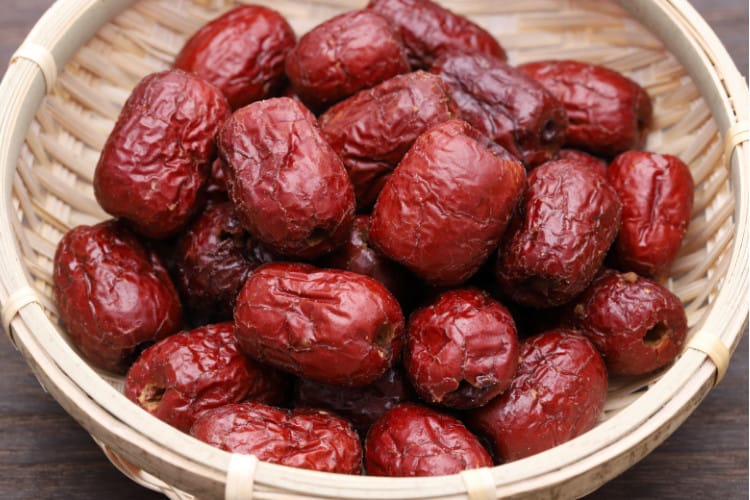
- Jujube (Red Dates): These sweet treats are symbolic of wealth in the new year. Chinese people serve jujubes as a dried fruit snack or cut into slices and use them to make tea.
- Persimmon Cakes: With the end of the persimmon season, there’s no better way to use up these lucky fruits than with tasty cakes!
- Fried Dough Twists: These also symbolize reunion and are especially popular in Northern China. Tianjin’s fried dough twists are famous due to their renowned crispy texture, rich flavor, and creative ingredients.
- Spring Rolls and Egg Rolls: While people eat this savory snack year-round, spring rolls and egg rolls are a New Year symbol for wealth. A common New Year saying, “黄金万两 (hwang-jin wan-liang)” means “a ton of gold.”
More Yummy Chinese Dishes You Can Try Year-Round.
- Shanghai-style Braised Pork Belly
- Ginger-pork Potstickers
- Sriracha Shrimp With Noodles
- Chinese Tea Eggs
- Egg Fried Rice
- Chinese Dumplings
- Hot and Sour Soup
Xin Nian Kuai Le!
Enjoy family togetherness as you celebrate the Lunar New Year! What are some of your favorite Chinese New Year foods and recipes? Share them with the ones you love on FamilyApp!
